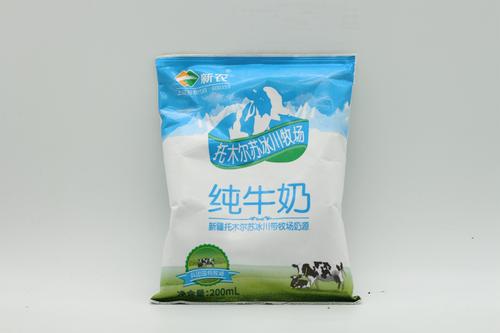Source: Link Testing Instruments co.,ltd
Liquid milk contains a large amount of fat and protein, which is prone to oxidative deterioration. Packaging materials with high barrier properties should be used for packaging to ensure that the liquid milk will not be affected by oxygen and other substances in the external environment to cause mildew, swelling and other deterioration. . The packaging of liquid milk is mainly in three forms: bag, box and bottle. The bag is mainly made of milky white film, black and white film, aseptic pillow (Tetra Pak) and other materials.

Tetra Pak Pillow is a paper-aluminum-plastic composite film package made of polyethylene, paper, aluminum foil and other materials. It has high barrier properties due to the addition of metal material aluminum foil. The liquid milk Tetra Pak pillow packaging can meet 45-90 days Shelf life. The composite fastness between the various layers of the Tetra Pak pillow is an important factor affecting the overall barrier properties and physical mechanical strength of the Tetra Pak pillow. The composite fastness can be expressed by peeling force or peeling strength. If the composite fastness between each layer of the film is poor, it is easy to cause the composite film to delaminate, resulting in a reduction in the barrier properties of the composite film and a serious decrease in physical and mechanical strength, which is easy to cause the quality of finished packaging Therefore, companies should strictly monitor the peeling force or peel strength between each layer of the film to ensure composite fastness.
Test methods and standards
At present, the domestic standard for the peeling force or peeling strength of composite films for packaging is mainly GB 8808-88 "Peeling Test Method for Soft Composite Plastic Materials".
This test uses the LTS-05 intelligent electronic tensile testing machine independently developed and produced by Link Testing to test the peeling force and peeling strength of the sample.
Test principle: Manually peel off the film to be separated and tested in advance with the sample of the specified width, and clamp the two ends of the separated sample on the two clamps. The two clamps move relative to each other to perform T-shaped peeling. The above force sensor measures the average peel force between each layer of the composite film, that is, the peel strength.
Test sample and test process
Test sample: a certain brand of pure milk Tetra Pak pillow packaging material roll film.
Experimental procedure:
(1) Use a sampler to cut 5 samples each with a width of 15 mm and a length of 200 mm along the horizontal and vertical directions of the Tetra Pak pillow packaging material roll film.
(2) At one end of the sample, manually pre-stripped 50 mm along the length.
(3) Clamp the two ends of the stripped part of the sample with the upper and lower clamps of the equipment, so that the long axis of the sample coincides with the center line of the two clamps.
(4) Set test parameters such as test speed and sample width.
(5) Click the test start option, the test starts, the device automatically tests the force value during the peeling process of the sample, and reports the final test result.
Test results and analysis
The longitudinal peel force and the transverse peel force between the pure milk Tetra Pak pillow paper layer and the aluminum-plastic layer of the test sample are 7.354 N and 7.156 N, respectively.
LTS-05 Tensile tester can used on the flexible packaging testing. If you have any interest please visit our website www.linktesting.org or send email to us info@linktesting.org